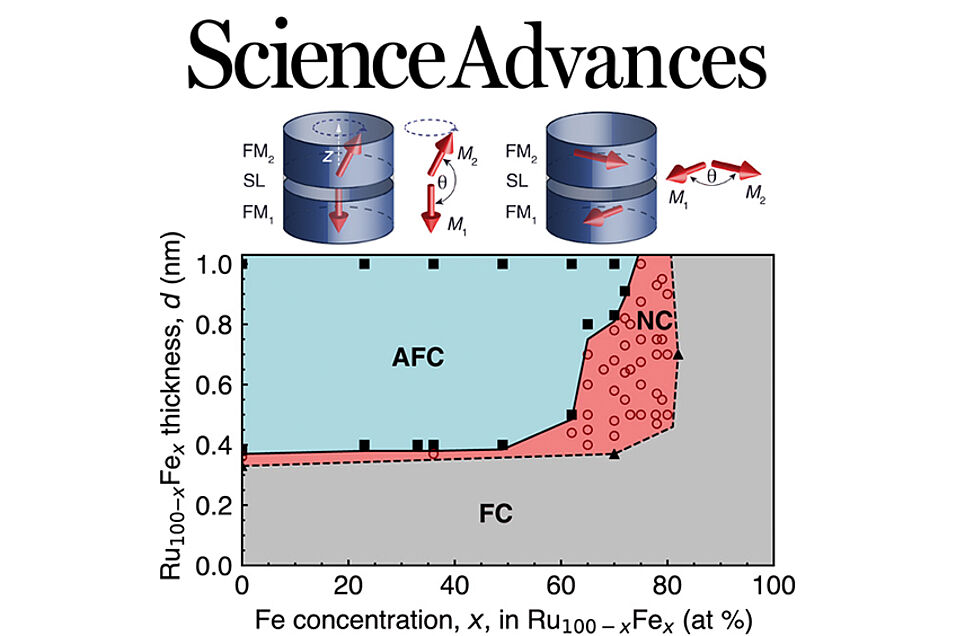Magnetic multilayer systems play a key role in the development of novel storage technologies like spin-transfer torque MRAM and spin-orbit torque MRAM. Up till now, the exchange coupling of two neighboring magnetic layers could be varied in a collinear fashion only by means of the Ruderman–Kittel–Kasuya–Yosida (RKKY) interaction. By varying the iron content in a RuFe spacer layer, the group of Erol Girt from SFU, Burnaby, Canada, showed that the coupling angle can be tuned to arbitrary values by introducing a biquadratic contribution to the interface coupling. Claas Abert and Dieter Suess delivered a theoretical model to describe this novel effect. The joint work was published in Science Advances.
Science Advances 25 Nov 2020:
Vol. 6, no. 48, eabd8861
DOI: 10.1126/sciadv.abd8861
Links:
Physics of Functional Materials: fun.univie.ac.at
Research Platform MMM Mathematics-Magnetism-Materials: ufind.univie.ac.at/en/pvz_sub.html

